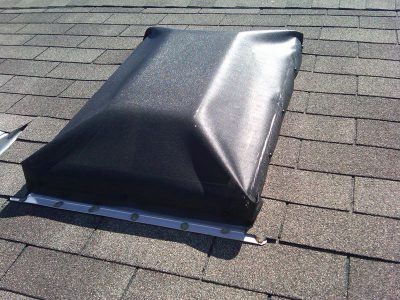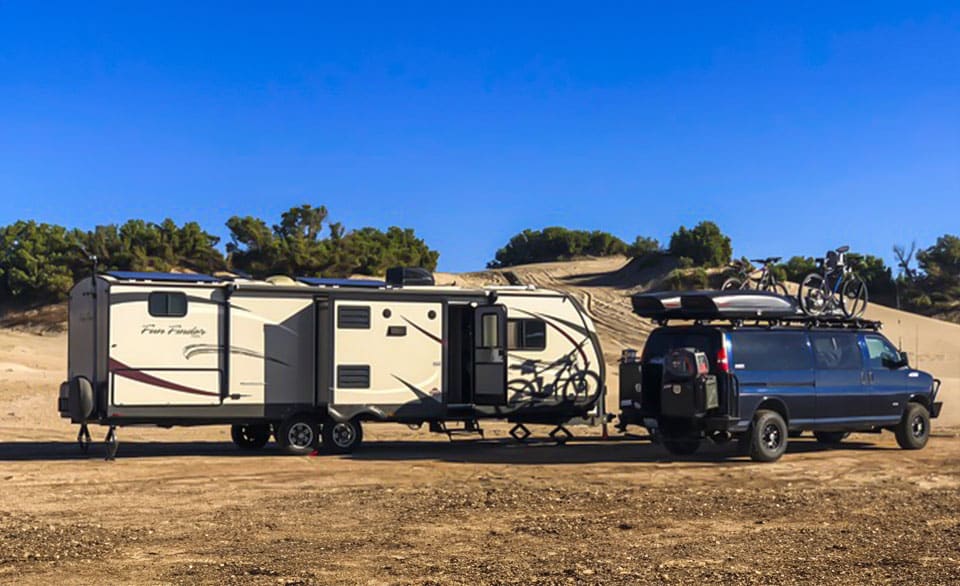
10 Must-Have RV Accessories for a Perfect Journey
Image Credit: Gavin Seim / Pixabay
Regarding RV living, having the right accessories can make all the difference. RV accessories enhance the overall experience and provide practical solutions to many common problems while living on the road. From temperature control to internet connectivity, the list of must-have RV accessories can be overwhelming. However, investing in these accessories can help make your RV more comfortable, functional, and enjoyable.

Image Credit: Rudy and Peter Skitterians / Pixabay
Investing in these top ten must-have RV accessories can provide a multitude of benefits and next to zero negatives besides the added cost of investment into your RV. Whether you’re a full-time RVer or just like to enjoy the occasional road trip with family and friends, these must-have accessories can seriously help make life on the road feel more like home. Some of the benefits of investing in must-have accessories include:
Improved comfort and convenience: RV accessories can make life on the road far more comfortable and convenient for everyone in the rig. For example, thermal insulation kits can help regulate the temperature inside your RV and minimize the need for heating and cooling equipment. RV skirting can protect your RV from the elements and pests, in addition, to helping maintain the temperature inside of the RV.
Enhanced safety and security: RV accessories can also improve safety and security on the road. For example, RV surge protectors can protect your electrical system from power surges. In addition, RV-specific GPS navigation systems can help you navigate unfamiliar streets, low bridges, and tight turns and avoid hazards on your trip.
Cost savings: While there may be a sticker shock to some of the items on our top ten must-have RV accessories, these investments can help you save money in the long run. For example, portable solar panels can help you save on energy costs by providing a renewable power source for your RV and the potential to not have to plug into shore power depending on your final setup. If you are plugging into shore power or running a generator while boondocking, having good skirting can help reduce the energy needed to keep the RV warm or cool.
Now let’s take a closer look at ten must-have RV accessories that can enhance your RV experience:
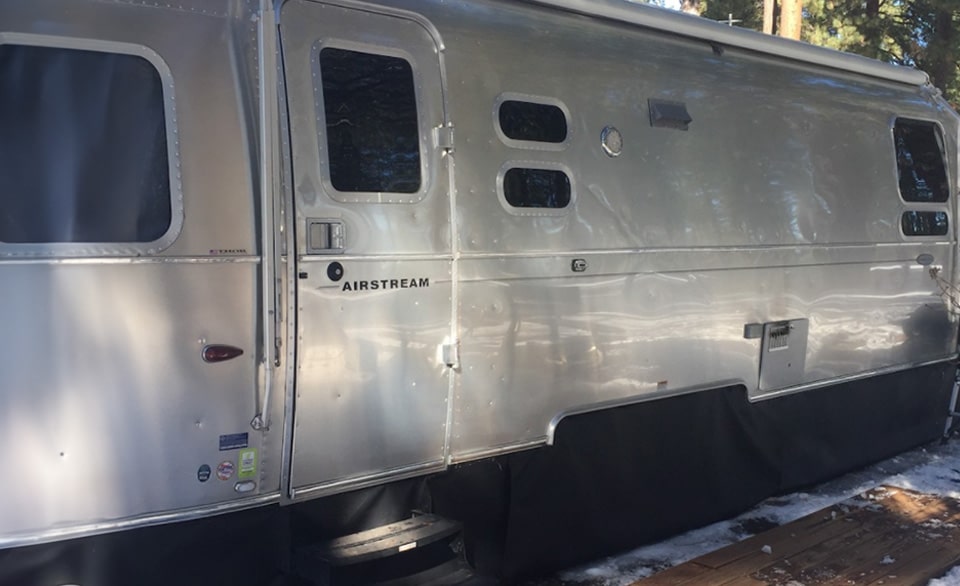
RV Snap-On Skirting:
RV snap-on skirting is a protective barrier that attaches to the bottom of your RV. It is typically made of durable fabric or vinyl. The price can vary drastically depending on the size and type of skirting you choose. For instance, stiff or rigid skirting will be the most effective and increase the R-value of your RV the best, but it will also be the most expensive option. Alternatively, soft skirting, usually made from vinyl rolls, is the best bang for your buck. It costs less than hard skirting and is typically easier to add/remove and store. However, it will not be as effective at insulating as hard skirting because there will inevitably be gaps at the base of the skirting if not weighed down, and the vinyl itself is not an efficient insulator. There are also plenty of DIY options using plywood, insulating panels, or spare vinyl.
Temperature control: RV skirting can help regulate the temperature inside your RV by providing an additional insulation layer.
Protection from elements: RV skirting can protect your RV from wind, rain, and snow, which can help prevent damage and keep your RV in good condition.
Pest control: RV skirting can also help keep pests, such as rodents and insects, from entering your RV.
Increased living and storage space: By adding RV skirting, you are, in essence, doubling the square footage of your RV and creating tons of additional storage space for anything that can be kept outside but needs a degree of protection, like bikes, extra shoes, outdoor equipment specific to the trip, etc.
Consider the material, size, and color when choosing an RV snap-on skirting. First, look for skirting made of a durable, weather-resistant fabric designed to fit your make and model RV and is appropriate to the climates where you will most frequently have your RV. Next, consider the color of the skirting and choose one that complements the color of your RV. Finally, look at the products made and distributed by EZ Snap. They produce high-quality, pre-cut RV skirting kits that do not require drilling holes in your RV.

Image Credit: lw5315us / flickr
RV-Leveling Blocks:
A level RV is essential for maintaining stability and comfort and preventing damage to your RV’s chassis and suspension over time. A level RV also ensures that your appliances, such as your refrigerator, work correctly and that your plumbing systems can drain adequately.
There are several types of leveling blocks to choose from, including:
Plastic blocks: Plastic leveling blocks are lightweight and easy to use and are typically injection molded to fit the curvature of tires, maintaining a greater level of surface area contact and ensuring a solid hold.
Wood blocks: Wood leveling blocks are inexpensive and can be made from scrap lumber. However, you will want to connect the blocks with a rope or chain to ensure they do not slip, as there is less surface area in contact with the tire with a block.
Metal blocks: Metal leveling blocks are durable, can be used in extreme weather conditions, and tend to have much more intense traction to the tire in the form of tiny spikes that “bite” your tire. These are the most expensive and durable options but arguably one of the most effective and longest-lasting.
How to use leveling blocks effectively:
When using leveling blocks, start with a surface cleared of rocks and debris. Use a bubble level to determine which corner is the lowest. Place a stack of blocks under that corner leveling jack, then raise the jack until close to level. Rinse and repeat for the remaining three leveling jacks.

Image Credit: H. Michael Miley / flickr
RV Specific GPS Navigation System:
A dedicated RV GPS navigation system can help you navigate unfamiliar roads and avoid hazards like low bridges, narrow roads, and unexpectedly tight turns. RV GPS systems, similar to others, provide real-time traffic updates, which can help you avoid delays, save time, and enjoy your trip.
When choosing an RV GPS navigation system, consider elements such as:
Screen size: A larger screen size can make reading the map easier and navigating.
Traffic updates: Real-time traffic updates can help you avoid delays and save time.
Voice commands: Voice commands can make it easier to use the GPS system while driving
Some popular RV GPS navigation systems include:
Garmin RV 890: This GPS system is designed specifically for RVs and provides real-time traffic updates, voice commands, and a large 8-inch screen.
TomTom Go Camper: This GPS system provides customized routes for RVs and includes features such as campsite reviews and alerts for low bridges and narrow roads.
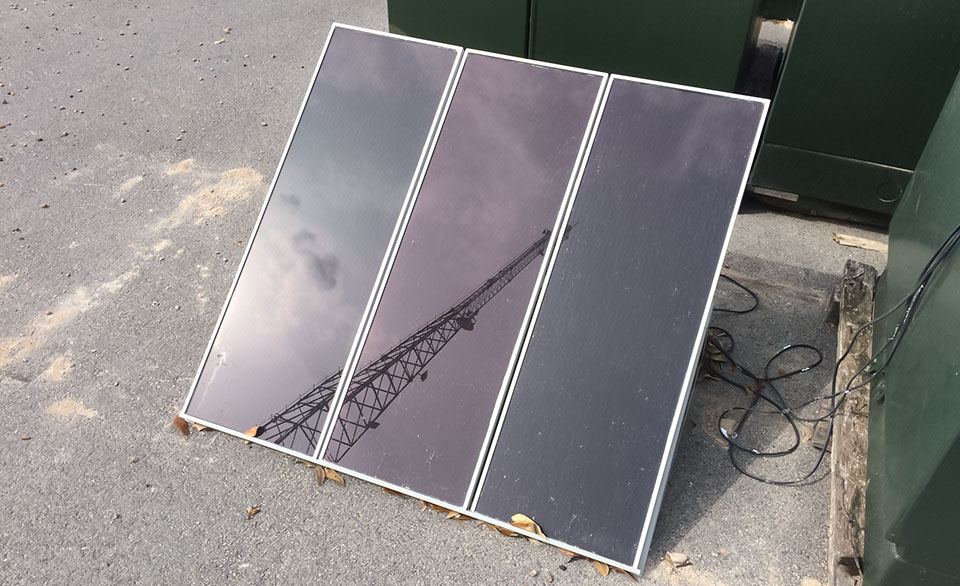
Image Credit: jcutrer / flickr
Portable Solar Panels:
Solar power is a renewable and environmentally-friendly source of power for RVs. Portable solar panels can provide a reliable source of power for your RV, even when you’re off the grid, extend the duration of your trips, and expand the possibilities of where you can go.
There are several types of portable solar panels to choose from, including:
Foldable solar panels: Foldable solar panels are lightweight and easy to transport but tend to be more expensive as they are more modular than rigid panels and typically restricted in power production due to the nature of the folding design limiting the physical size of the panel. These are an excellent option for supplemental power as they can be easily moved with shadows throughout the day.
Rigid solar panels: Rigid solar panels are durable and can be mounted on your RV’s roof, these come in a wide variety of options, but you will want to look for monocrystalline panels as they are much more efficient and what most modern solar power systems will be using.
Flexible solar panels: Flexible solar panels are lightweight and can be curved to fit the contours of your RV’s roof. These are the most expensive option, but for a good reason, as they are the lightest and most durable option. They can also be customized to your RV more than the other options and easily be removed.
Consider the power output of the panels, power requirements of your RV, size, and weight when choosing a portable solar panel. In addition, look for a solar panel that is easy to install and has a high-efficiency rating, can connect to your current system or has a standalone battery system, and can meet your personal power requirements.
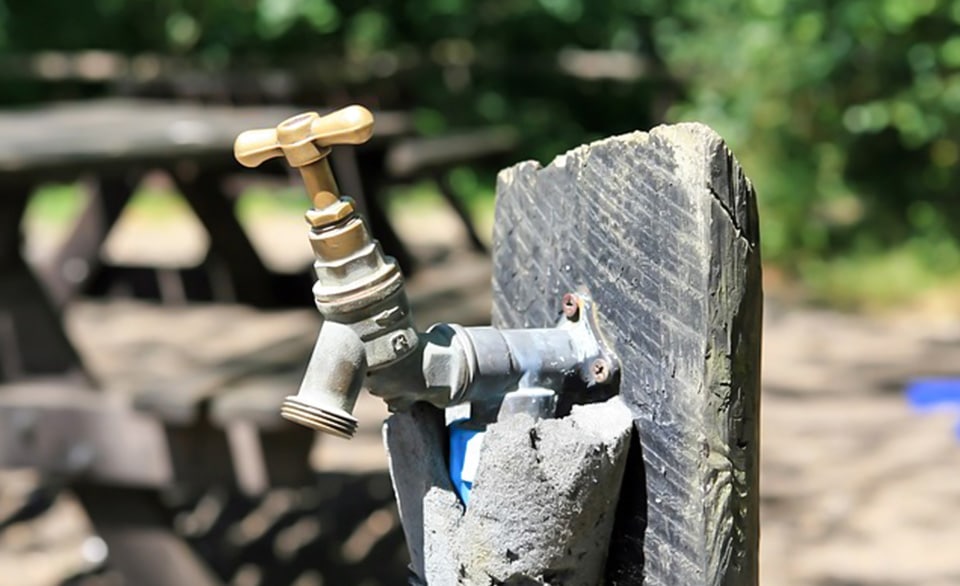
Image Credit: Robert Owen-Wahl / Pixabay
RV Water Filters:
Clean water is essential for maintaining good health in your RV. Unfortunately, water sources in RV parks or campsites may contain bacteria, viruses, or other contaminants that can cause illness and damage your trip. So you need to have your own trusted water filtration system on (and off) the road.
There are several types of water filters to choose from, including:
Inline water filters: Inline water filters are installed directly into the water line and are designed to remove sediment, chlorine, and other impurities. These are a great “first defense,” You should always have one in your RV to install on spigots before the water enters your holding tank.
Under-sink water filters: Under-sink water filters are installed under the sink and provide clean drinking water to your RV faucet. This should be used with an inline filter for clean drinking water from unverified sources.
Portable water filters: Portable water filters are lightweight and can filter water from any source. These are typically found in camping stores designed for backcountry or emergency settings. They are highly effective but very slow and have limited fill rates.
Countertop or in-fridge water filters: These are filters that are filled up with unpurified water and are typically filtered using a gravity system and kept on your counter, such as a Berkey filter, or in your fridge, such as a Brita.
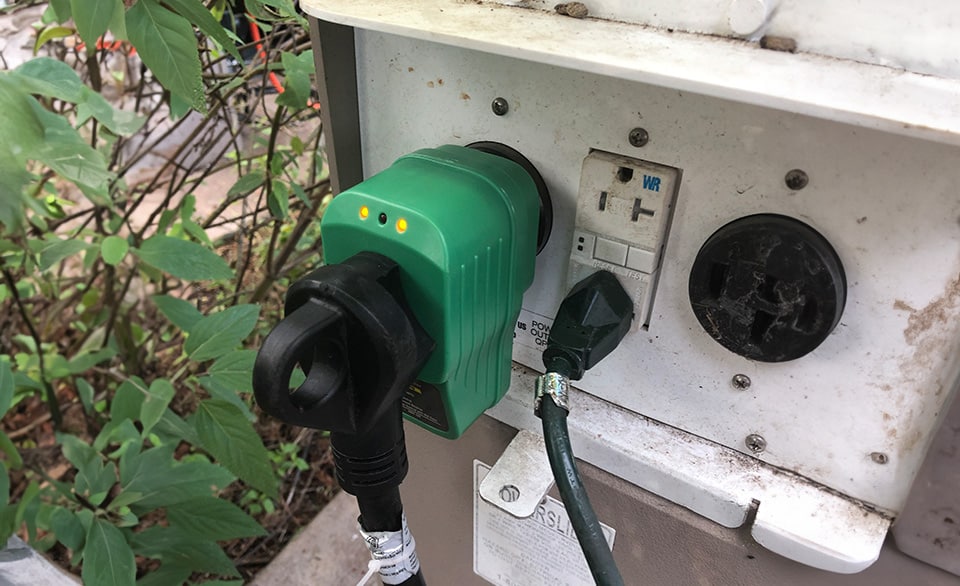
RV Surge Protectors:
A surge protector protects your RV’s electrical system from power surges and other electrical issues, which is especially important in places like RV parks or campgrounds, whose power stability is unknown.
There are several types of RV surge protectors to choose from, including:
Portable surge protectors: Portable surge protectors can be used at any RV site and are easy to install.
Hardwired surge protectors: Hardwired surge protectors are permanently installed in your RV and provide continuous protection.
When choosing a surge protector, consider the level of protection, the size of your RV’s electrical system, and the type of plugs and connectors you need.
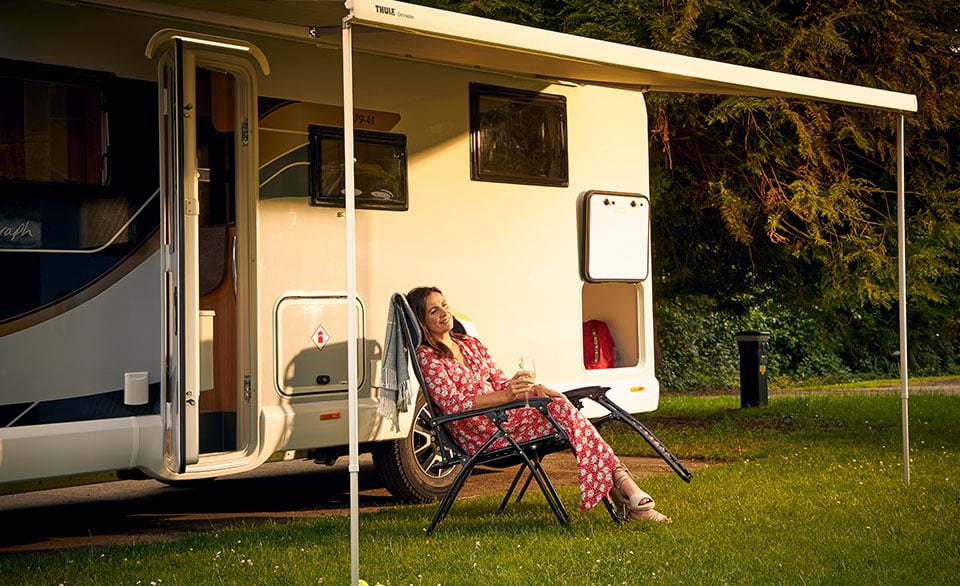
Image Credit: Bailey of Bristol / flickr
RV Awning and Outdoor Living Accessories:
An RV awning and outdoor living accessories can enhance your outdoor living space and make your RV experience more enjoyable.
There are several types of RV awnings to choose from, including:
Retractable awnings: Retractable awnings can be easily retracted when not in use, providing more space when needed.
Fixed awnings: Fixed awnings provide permanent shade and protection from the elements.
Slide-out awnings: Slide-out awnings provide shade and protection for your RV’s slide-outs.
Several additional outdoor living accessories can enhance your RV experience, including:
Outdoor rugs: Outdoor rugs can provide a comfortable and clean surface for outdoor living.
Outdoor furniture: Outdoor furniture can provide seating and relaxation for outdoor living.
Grills and cooking accessories: Grills and cooking accessories can provide a convenient way to cook.

Image Credit: Ryan Smith / flickr
Easy-to-Install Blinds:
Blinds are an essential accessory for any RV, providing privacy and light control that you may not realize you need until the moment you need it. They can also help regulate the temperature inside your RV by blocking out sunlight and reducing heat transfer in and out of your RV. RVs aren’t the most insulated things in the world, so anything you can do to help retain heat goes a long way.
There are several types of RV blinds to choose from, including:
Roller shades: Roller shades are made of fabric or vinyl and can be rolled up or down to control the amount of light that enters your RV. These are the “classic” kind of shades that you may see and are the most durable and lightweight option.
Pleated shades: These are made of a paper-like material and can be opened and closed by pulling on a cord. Pleated shades are relatively durable for their material. Still, they can only take so much abuse if left down while operating your RV.
Cellular shades: Cellular shades are made of a honeycomb-like material and provide superior insulation but are quite delicate in comparison, so consider spending the extra money on a more durable material if given the option.
When selecting blinds for your RV, consider factors such as the material, color, and size. Look for blinds made of durable, lightweight materials designed to fit your RV windows, and consider your specific need for blinds. When installing blinds, follow the manufacturer’s instructions carefully and use the appropriate tools and hardware.

Thermal Insulation Kits:
Proper insulation is critical for maintaining a comfortable temperature inside your RV for you and your family. With adequate insulation, your RV can become more comfortable and warmer, making sleeping, relaxing, or working easier and feel more like your home away from home.
There are several types of RV insulation kits to choose from that will create a much better traveling environment for you, including:
Foam insulation: Foam insulation is easy to install and provides excellent thermal insulation. You can cut it to tight tolerances custom to any nook and cranny in your RV. However, foam insulation is not the most durable thing in the world, so be careful when removing and storing it.
Reflective insulation: Reflective insulation is designed to reflect heat and is ideal for hot climates as it reflects heat away from your windows and traps the cool air inside. Also, very durable and easy to store as it is flexible and can be folded or rolled up.
Insulation blankets: Insulation blankets are lightweight materials placed over windows and doors to reduce heat transfer. Insulation blankets are the easiest to install as you don’t need to be exact. In fact, they are thick curtains you put over your windows or can even hang up to create “walls” to trap heat within specific areas of your RV.
When installing insulation in your RV, following the manufacturer’s instructions carefully is essential. Wear gloves and protective clothing, as certain insulation materials, such as fiberglass, can irritate the skin. Consider hiring a professional insulation installer if you’re uncomfortable doing the work yourself.
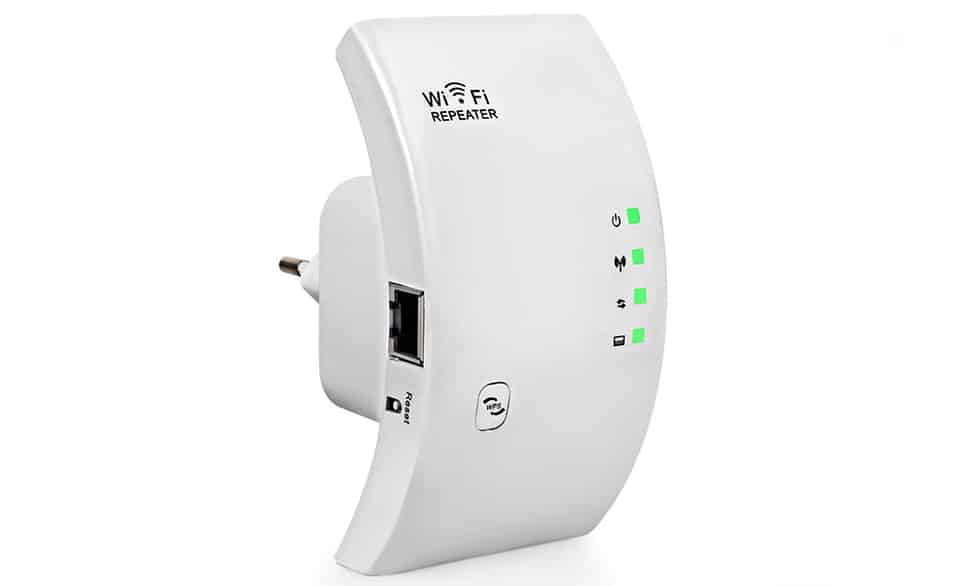
Image Credit: Indonesian Art Creative / flickr
RV Wi-Fi Boosters:
A Wi-Fi booster can help you stay connected to the internet while on the road. This is especially important for remote workers or those who need to stay connected to the internet while traveling or have a stable video call with friends to show them how great of a time you’re having in your RV.
There are several types of RV Wi-Fi boosters to choose from, including:
Wireless range extenders: WIFI range extenders enable you to receive a signal from further away, such as when you get assigned the furthest RV parking space from the building that holds the WIFI router for the campground. Another use for them is to transmit a signal further; for example, if you have Wi-Fi in your trailer, you can boost the signal to reach you further away if you have a nice spot you would like to relax AND have WIFI.
Cellular signal boosters: Cellular signal boosters can boost the strength of your RV’s cellular signal, providing faster internet speeds and excellent internet connectivity when needed. These use your wireless provider, typically valid for folks using a mobile hotspot in their RV.
Satellite internet: Satellite internet provides internet connectivity in remote areas where other types of internet may not be available and is the fastest and most reliable form of wireless internet. Also, the most expensive option and typically requires lengthier contracts.
When choosing a Wi-Fi booster for your RV, consider factors such as the strength of the signal needed, the number of people needing WIFI in your RV, and the speed of the internet connection you need.
Conclusion
Having the right accessories can significantly enhance your RV experience. From ensuring your RV is level and well-insulated to staying connected, this article’s 10 must-have RV accessories can dramatically improve your comfort and enjoyment while traveling.
While not traveling in your RV, the use of RV covers is highly recommended to keep your RV protected from the elements. Keeping rain, damaging UV rays, dust, dirt and anything else the wind can carry, off your vehicle.
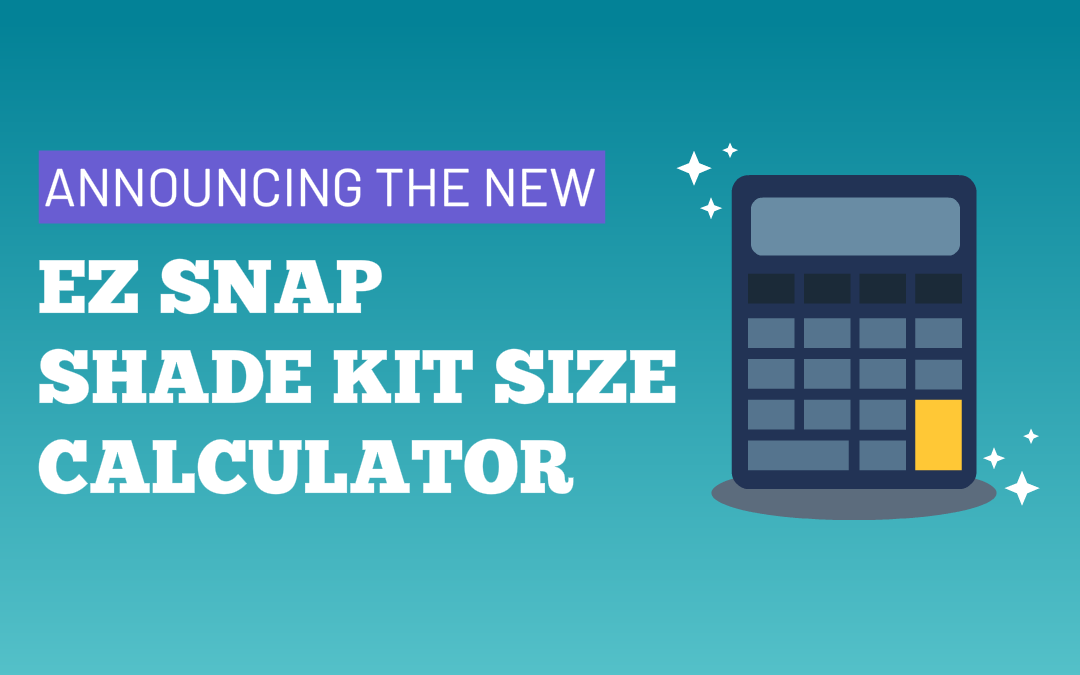







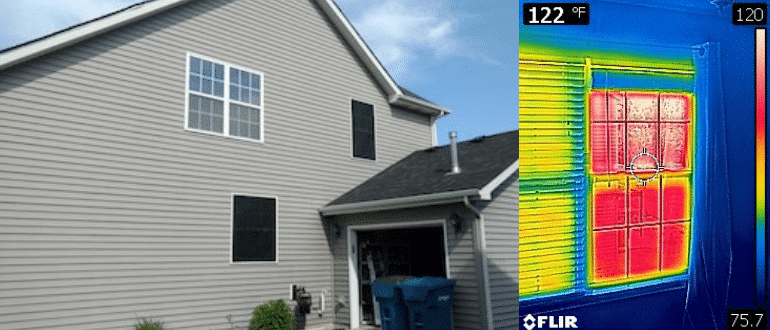
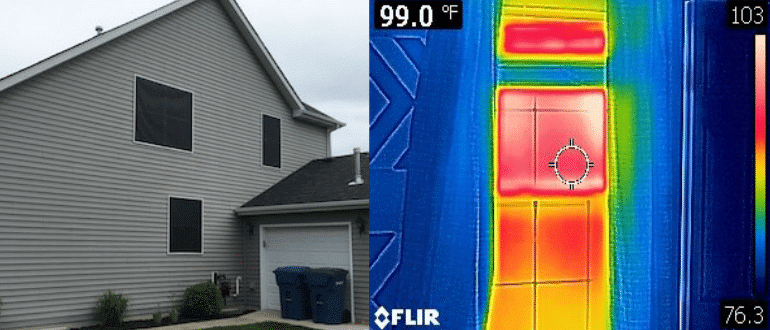

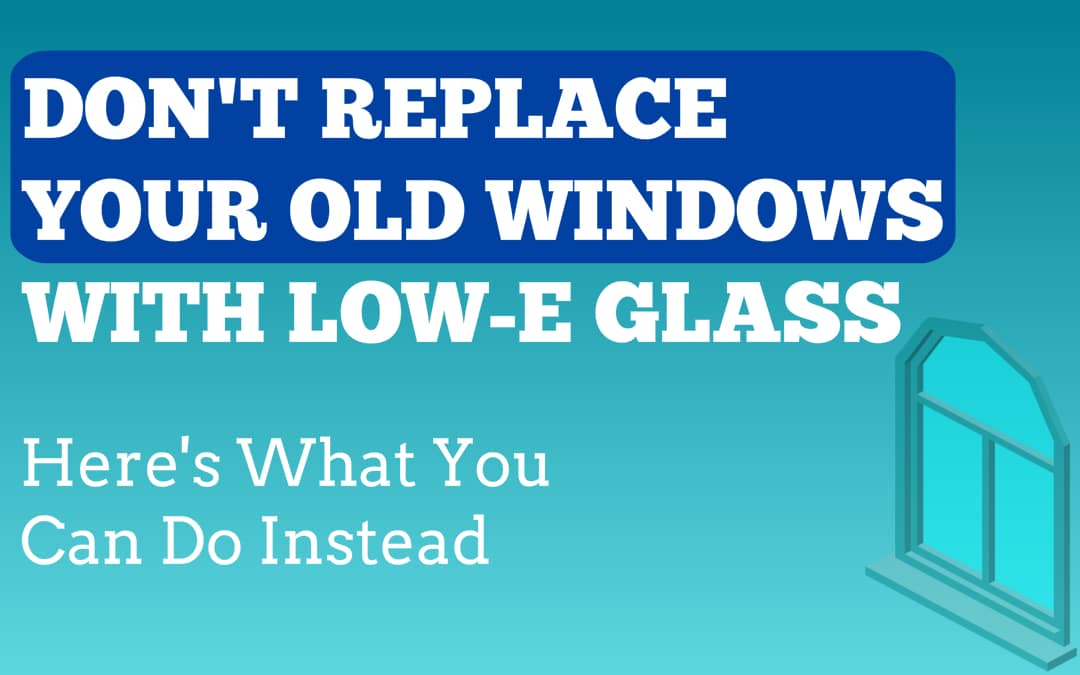
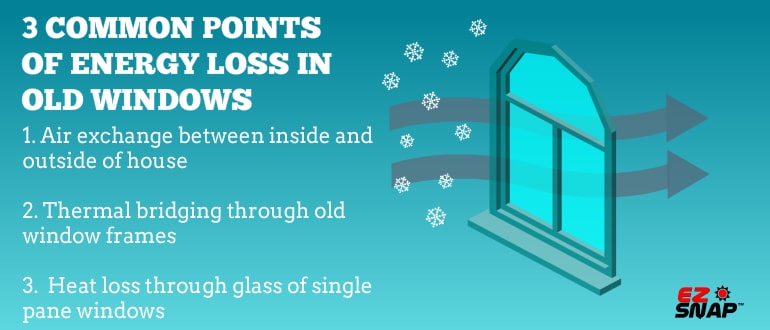
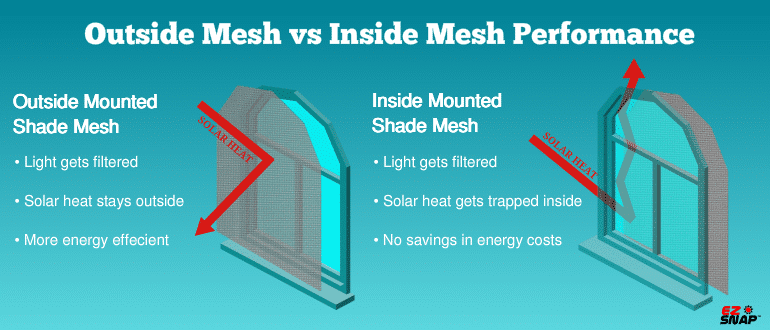
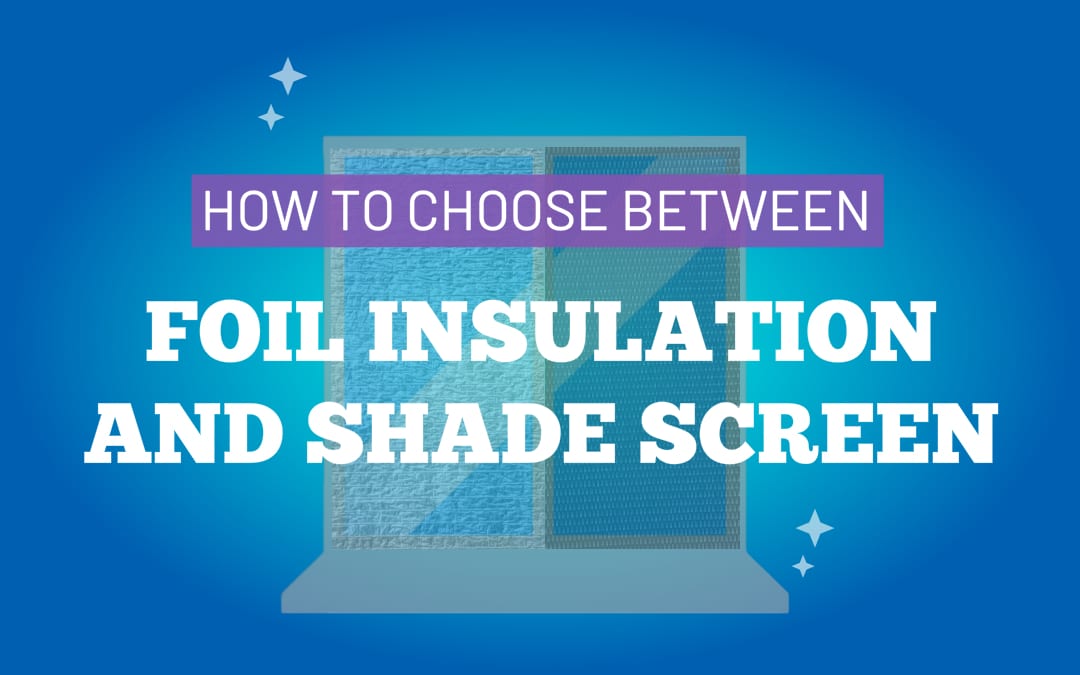

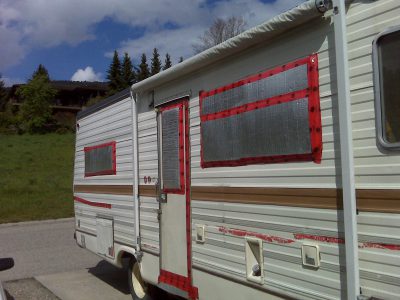

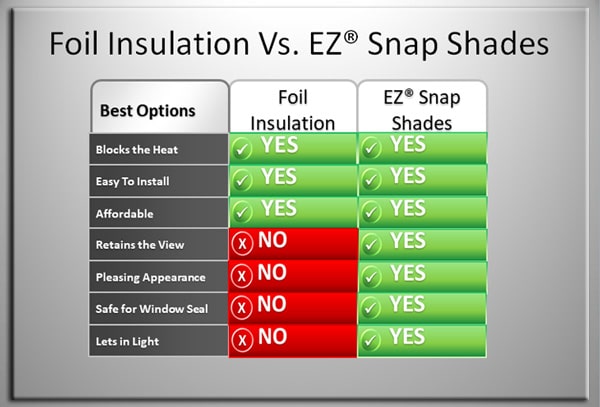
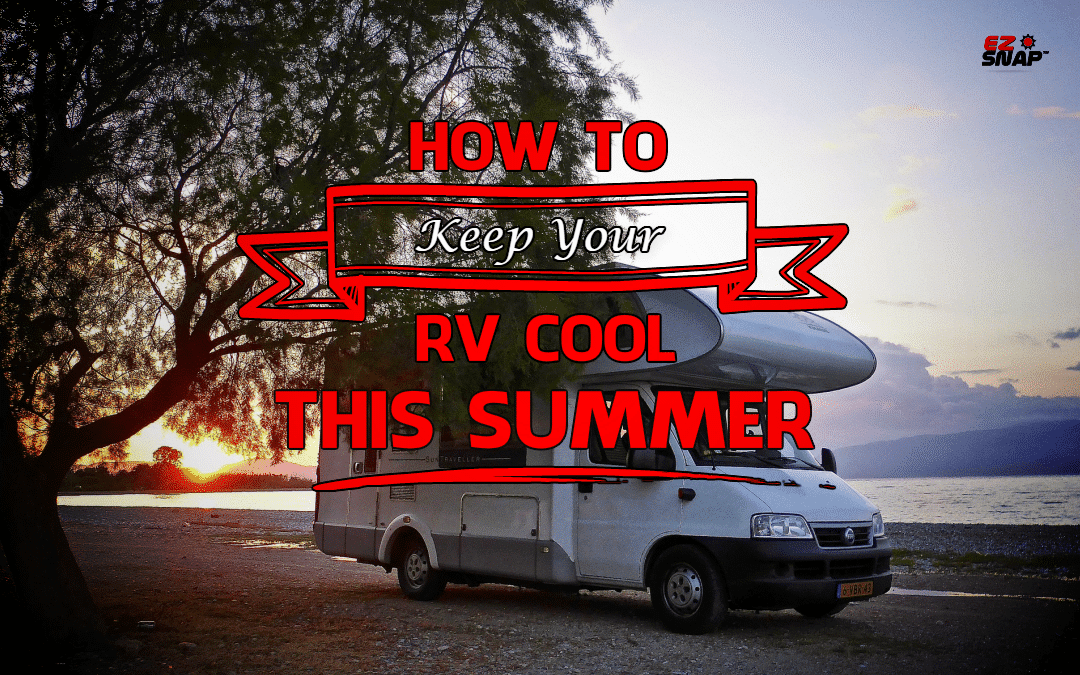
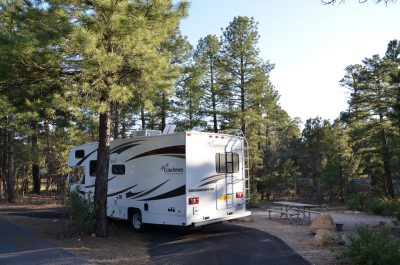
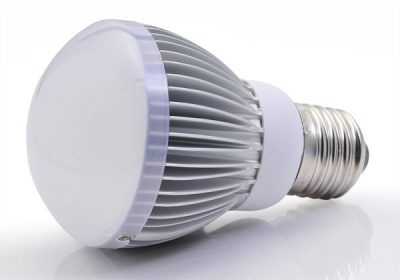 keep the temperature down every little thing counts, and this is one that doesn’t take much of an effort to do. If you’re still using
keep the temperature down every little thing counts, and this is one that doesn’t take much of an effort to do. If you’re still using  majority of your meals outside of your RV. Any time you fire up your oven you are generating a lot of heat that is hard to dissipate. Plus, who wants to cook in a sweltering hot room? Cook your meals outside, either
majority of your meals outside of your RV. Any time you fire up your oven you are generating a lot of heat that is hard to dissipate. Plus, who wants to cook in a sweltering hot room? Cook your meals outside, either 
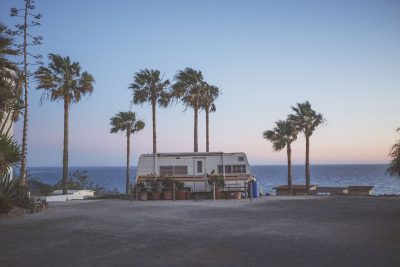

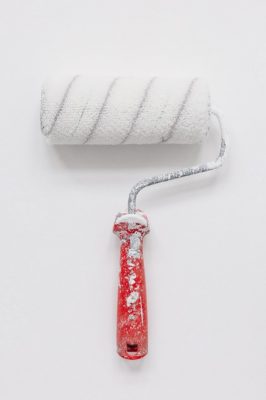
 fix that is by far the cheapest of all your options. Simply buy a blue tarp that is several feet longer than your skylight. Lay it over top of the skylight so that it is completely covered and pin down the excess fabric using bricks. It’s a fast, cheap, and easy skylight cover.
fix that is by far the cheapest of all your options. Simply buy a blue tarp that is several feet longer than your skylight. Lay it over top of the skylight so that it is completely covered and pin down the excess fabric using bricks. It’s a fast, cheap, and easy skylight cover.